By 2027, the quality of surface water must comply with (stringent) European requirements. Whether the horticultural sector will meet the standards by that time is highly questionable. Although major steps have been taken in purification and recycling, measurements show that progress is leveling off.
Why that is and what needs to be done to still achieve the required water quality was the theme of the Water Day held this week in the World Horti Center (WHC) in Naaldwijk. A panel consisting of Dijkgraaf Piet-Hein Daverveldt, Royal Brinkman water engineer Joshua Reijnen, plant nutritionist Geerten van der Lugt and chairman of the Westland region of Glastuinbouw Nederland Jacco Vooijs presented their findings.
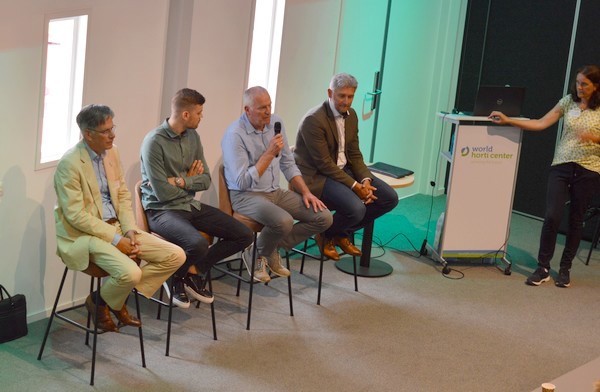
From the left: Dijkgraaf (chair of water board) Piet-Hein Daverveldt, Royal Brinkman water engineer Joshua Reijnen, plant nutritionist Geerten van der Lugt and chairman of the Westland region of Glastuinbouw Nederland Jacco Vooijs.
Water consumption is increasing
A few takeaways. Of all the water consumed by horticulture, some 30% is recirculated. It cannot be much more than that because the lion's share evaporates and goes out the window. At the same time, production is still on the rise, so a net increase in irrigation water is still needed every year.
(Sub)consciously
It is estimated that 2% of all water entering the greenhouse leaks away. That is a lot, and the seriousness and extent of the problem are not sufficiently understood. At the same time, the leakage is usually unintentional and not caused by so-called 'rotten apples' (for there are hardly any left). Therefore, the motto is: start a targeted search, examine your entire company, be aware of your own situation, and do not be taken by surprise. In this regard, no one should be able to pretend they have no idea.
Enforcement
Enforcement is also a tricky issue. As someone from the Water Board pointed out to the audience, the relevant authorities enforce the law, not water quality. Action can be taken in the event of clear violations, but the 'duty of care' is already a problematic category; nature itself is also capricious. The phenomenon of 'secondary poisoning' was mentioned several times, the phenomenon that a polluted soil or ditch can continue to release nutrients, chemicals, and other substances for years afterwards, completely unrelated to the actual activities above ground. In other words, what exactly to measure, and how exactly to measure it is not so clear yet.
Workshops
After the plenary part, a series of workshops looked at ways of further improving water quality in and around the greenhouse, from various angles, in order to ensure that sufficient irrigation water would also be available in the future.
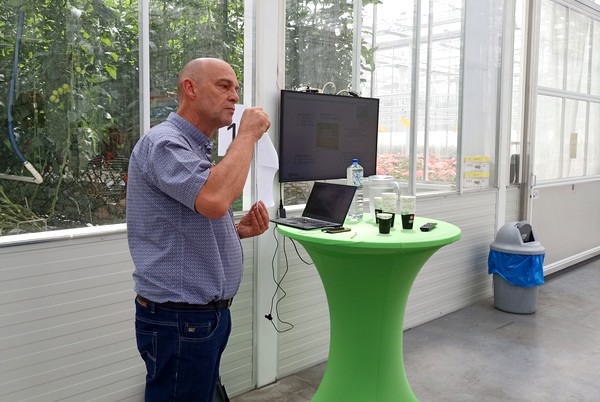
Jos Berends of Grodan explained how to yield improvements and cost savings can be achieved through the smart use of the substrate.
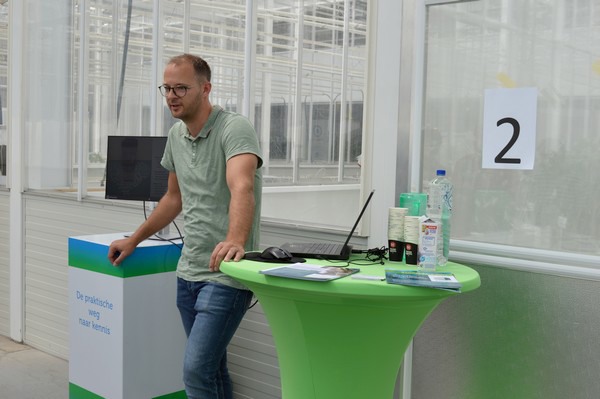
Thomas Verburg, owner of Cindro, spoke about the ins and outs of cleaning the water system with stabilized hydrogen peroxide, with or without combination with a nanobubble unit.

Martijn Blind of Vertify shared the findings of the international research project into the cultivation on water Hy4Dense. Specifically, the project looks at the possibilities of growing young vegetable plants in (even) higher densities. More information can be found here.
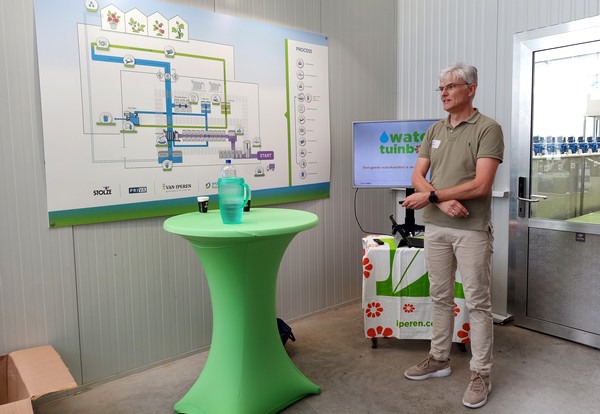
Dick Breugem of Van Iperen. To get the nutrients to the plant in the best and most effective way, good water quality is crucial. Van Iperen is therefore happy to look at and measure the water system in order to provide tailor-made advice.
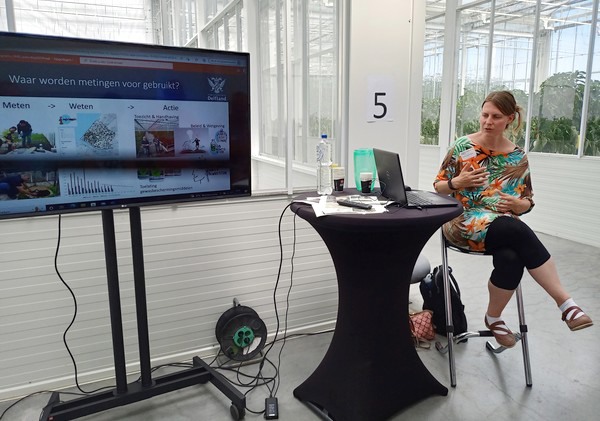
Djolene van den Berg of the Delfland Water Board explains how they measure, what they measure, and where they measure. In principle, all data is public (see this dashboard), but the question is how to make it more transparent. Conversely, it is important to know exactly what data one wants to see and how it can best be presented.
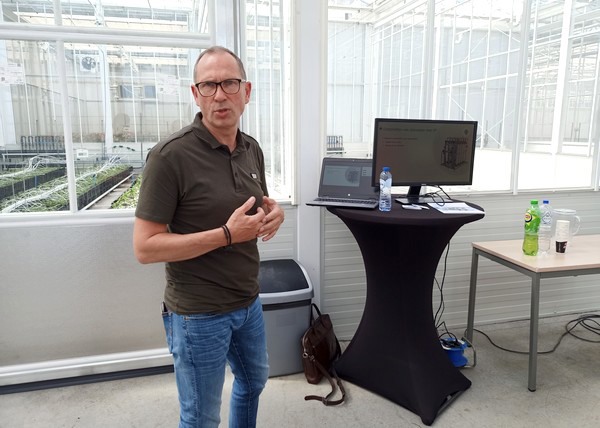
Micha van Nieuwkerk of Van der Ende Groep talks about disinfecting the drain using ultrafiltration, an existing technique that until recently was relatively unknown in the horticultural sector.
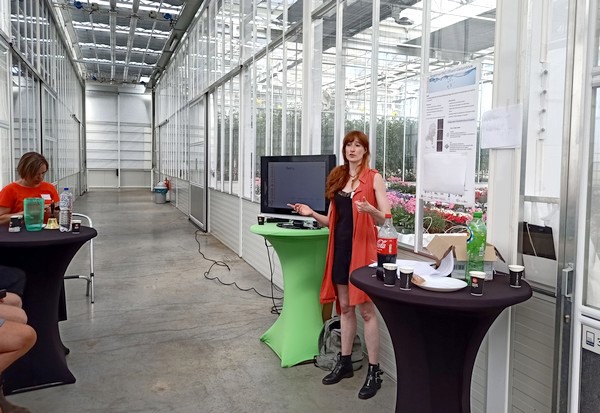
Jolijn Bonnet of the Control in Food & Flowers Foundation is researching the perception of the use of cleaned sewage, called effluent, as irrigation water in horticulture. Tests have shown that this is possible, but there is still work to be done in terms of practical implementation and, so to speak, in between people's ears.
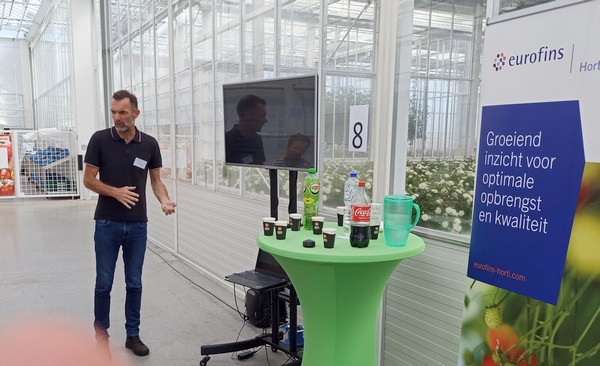
Frank Hoeberichts of Eurofins talks about the various techniques for detecting pathogens, viruses, bacteria, and any other constituents in a water sample. The latest technique is a so-called microbiome analysis, with which literally "everything" can be found and classified.
The day was organized by Glastuinbouw Nederland in collaboration with the WHC and Vertify. Eighty people had registered, and participation could also count towards the granting of the Sprayer's Licence for Crop Protection Operations, section Safety and Technology.
